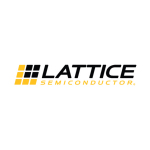Innovations and Developments in Technology: A Comprehensive Overview
Author: Staff Writer

The world of technology is continuously evolving, driven by innovative solutions that aim to solve everyday challenges and enhance operational efficiencies. One of the most significant recent achievements is the recognition of the Lattice Semiconductor and NVIDIA Edge AI Solution as the "AI Edge Solution of the Year" at the 2025 AI Breakthrough Awards. This recognition underscores the importance of efficient, low-power AI solutions that can be implemented at the edge, allowing for real-time data processing and immediate insights.
The Lattice CertusPro™-NX Sensor to Ethernet Bridge Board, in collaboration with the NVIDIA Holoscan platform, has been instrumental in providing a full-stack platform for data acquisition. This technology not only enables robust data analysis but also supports industries looking to make data-driven decisions faster than ever before. As organizations worldwide seek to leverage AI for competitive advantage, solutions like this become crucial.

Lattice Semiconductor and NVIDIA Edge AI Solution.
In a different sector, the legal landscape is undergoing notable changes as investors navigate potential class action lawsuits. Bronstein, Gewirtz & Grossman LLC has announced a class action lawsuit against Apple Inc., targeting investors who suffered substantial losses between June 10, 2024, and June 9, 2025. The firm claims that Apple made misleading statements and failed to disclose critical information during this period.
Such legal actions highlight the increasing scrutiny tech giants face regarding their financial disclosures and the impact these can have on investor confidence. For potential class members, this presents an opportunity to recover losses while underscoring the importance of transparency in corporate governance. Investors are encouraged to act promptly to join the case and protect their interests.
In the realm of cryptocurrency, Google’s AI Gemini has made predictions regarding significant price movements for popular digital assets. Gemini forecasts Solana reaching $800, XRP ascending to $7.50, and the meme coin Little Pepe (LILPEPE) hitting $0.75 by Q4 2025. Such predictions can influence market behavior and investor strategies, highlighting the intersection of AI analytics and digital currency trading.
Additionally, the integration of AI into everyday technology is further evidenced by Nexar's smart dash cameras, which will soon connect to Charter's vast Wi-Fi network of over 17 million hotspots. This enhancement aims to ensure that drivers receive continuous monitoring and support while on the road, promoting safety and easing concerns related to driving conditions.
Amid these technological advancements, Zama continues to innovate in the field of encryption, as they recently secured $57 million in Series B funding. Their mission is to bring end-to-end encryption to public blockchains, a goal that could revolutionize financial applications and enhance privacy in digital transactions. With a total funding exceeding $150 million, Zama is well-positioned to make significant strides in the realm of secure financial technology.
Further illustrating the impact of technology on daily life, Amazon has launched generative AI-powered video descriptions for its Ring devices. This new feature aims to provide users with detailed insights and context about video footage captured by their security cameras, enhancing user experience and satisfaction. This use of AI reflects a broader trend toward making technology more intuitive and accessible to consumers.

Integration of Nexar dashcams with Charter's Wi-Fi network.
On the horizon, Google’s upcoming Pixel 10 has stirred excitement with reports of improved battery life and enhanced wireless charging capabilities, which promise to elevate user satisfaction and encourage the adoption of the latest technology in smartphones. These enhancements are part of a broader trend in the smartphone market, where consumers increasingly demand better performance and user-friendly features.
In the burgeoning field of AI infrastructure, rack-scale networking has emerged as a significant development for handling massive AI training and inference tasks. Companies like Nvidia, AMD, and Intel are leading the charge by implementing architectures that address bandwidth and efficiency challenges within AI operations. This shift could redefine how large AI models are trained and deployed, impacting both the tech industry and consumer applications.
As Google's latest text-to-image model, Imagen 4, captivates audiences with its impressive results, it highlights the rapid advancements in generative AI capabilities. These developments prompt discussions around the implications of AI on creativity and content generation, as high-quality, AI-generated images become an integral part of various industries.
Overall, the intersection of technology, business, and law is creating an environment ripe for innovation. Companies are leveraging AI and machine learning to not only enhance their products but also bring transparency to operations and engage with consumers more effectively. As we look forward to the future, it is clear that technology will play an instrumental role in shaping our lives, driving economic growth, and creating new opportunities across various sectors.